Freshwater Macroinvertebrate Communities


INTRODUCTION Freshwater macroinvertebrates are commonly used as biological indicators for aquatic ecosystems health, serving as indirect measure for water quality (Stark et al. 2001). Many authors argue that monitoring changes in macroinvertebrate community composition is important as they respond to water quality changes overtime and such changes are reflected in community composition and abundance (Resh […]
FCD Newsletter Issue #20
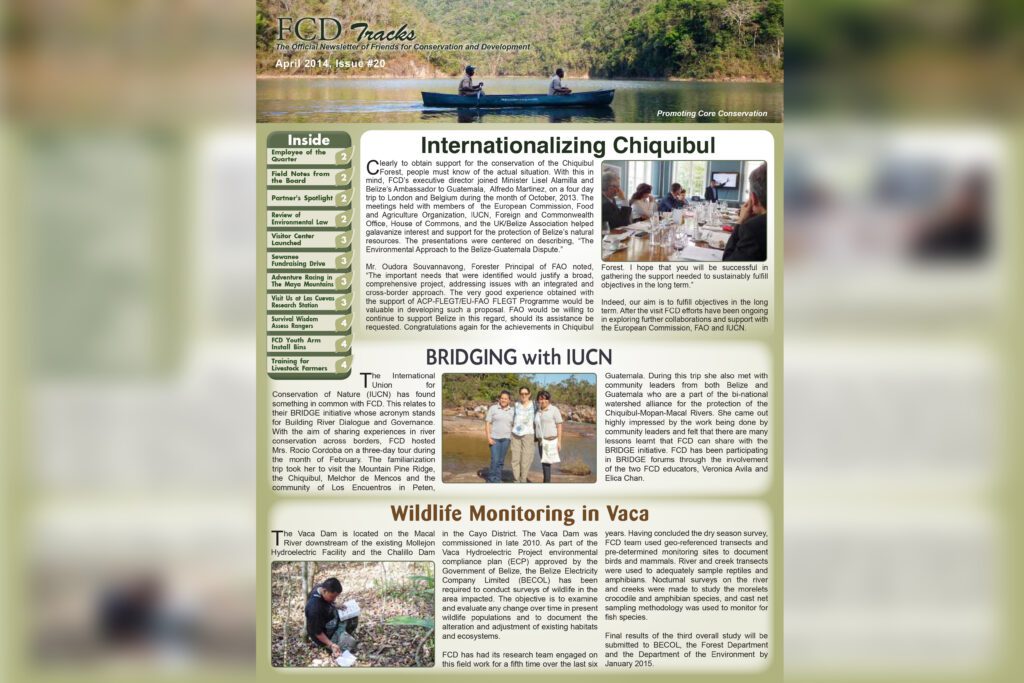

Internationalizing Chiquibul Clearly to obtain support for the conservation of the Chiquibul Forest, people must know of the actual situation. With this in mind, FCD’s executive director joined Minister Lisel Alamilla and Belize’s Ambassador to Guatemala, Alfredo Martinez, on a four day trip to London and Belgium during the month of October, 2013. The meetings […]
Scarlet Macaw Monitoring Program Final Report – 2013 Nesting Season


INTRODUCTION The Scarlet Macaw is the most widely distributed (Mexico to Brazil) of the 17 existing macaw species (Wiedenfeld 1994). Presently two subspecies have been identified being Ara macao cyanoptera (ranges from southern Mexico to southeast Nicaragua) and A. macao macao (ranges from extreme south of Nicaragua to Brazil and Bolivia) (Schmidt 2008). Scarlet Macaws […]
FCD Newsletter Issue #17


FCD and Asociación Balam sign partnership agreement In 2011, FCD signed a partnership agreement with Byron Castellanos, Executive Director of Asociación Balam, which solidified a working relationship between the two organizations. The mission of Balam is to conserve the integrated natural and cultural patrimony and the incorporation of civil society in management. Its focal area […]
FCD Newsletter Issue #16


Mitigating Illegal Logging A recent paper produced by the World Bank titled Justice for Forests notes that every two seconds, across the world, an area of forest the size of a football field is clear cut by illegal loggers. In some countries, up to 90% of all logging is illegal. Belize also suffers from illegal […]
Illegal LoggingIn TheChiquibul Forest


INTRODUCTION Belize has the greatest percentage (62.7%) of forest cover in the Mesoamerican Region (Cherrington et al. 2010); where 36% of its terrestrial component is under some form of legal protection. The Chiquibul Forest (CF) composed of the Chiquibul Forest Reserve, Chiquibul National Park and the Caracol Archeological Reserve is the largest single block of […]
FCD Newsletter Issue #15
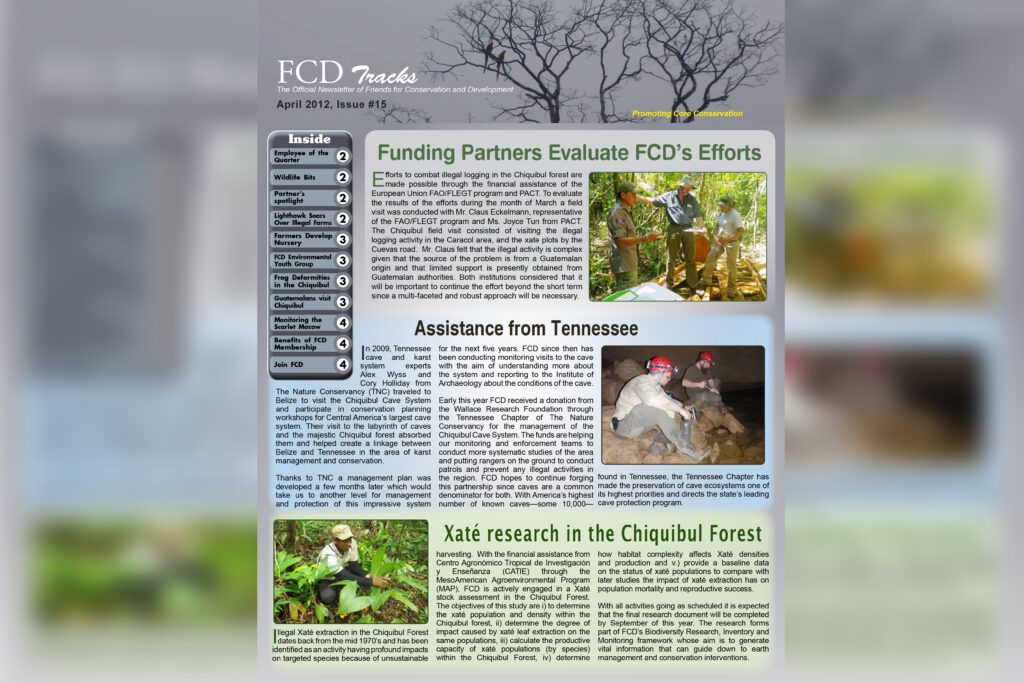

Guatemalan Leaders visit Chiquibul On the 25th and 26th of February a visit was conducted by alcaldes from Melchor de Mencos, Poptun, Dolores and San Luis to the Chiquibul forest. Each one of the alcaldes were accompanied by 2-3 other councilors. The visitors visited Caracol, an illegal logging site, and a xate trail used by […]
Deforestation (agricultural encroachments) In the Chiquibul National Park Technical Report 2011
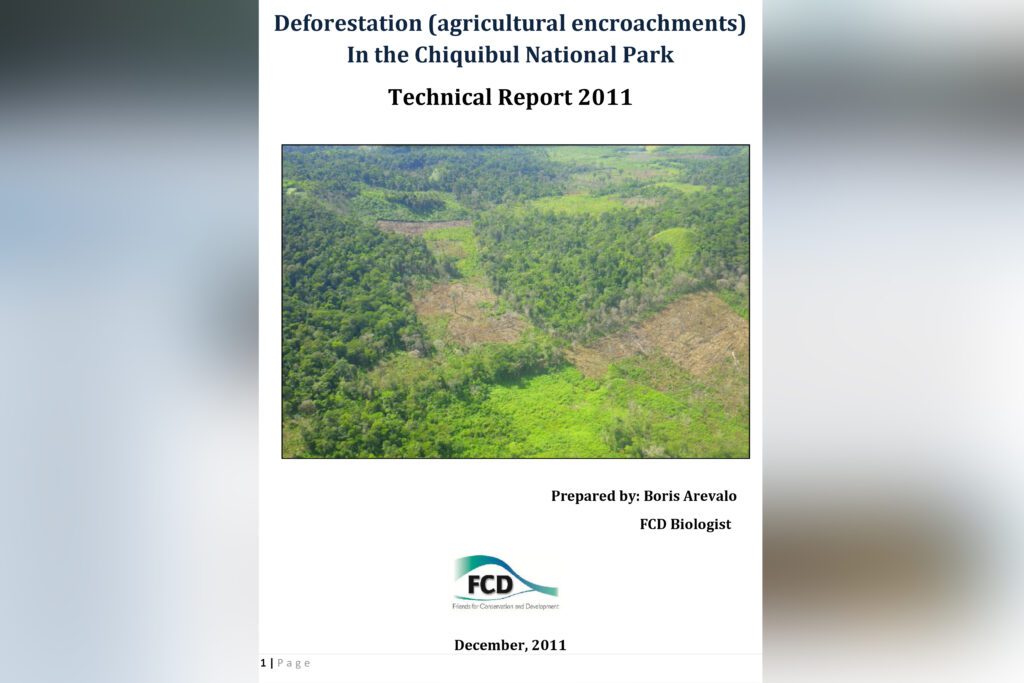

INTRODUCTION The Chiquibul Forest (CF), located within the Cayo District, covers an area of 176,999 ha (437,376 acres) and is comprised of three protected areas being the Chiquibul National Park (CNP) (106,838 ha), Chiquibul Forest Reserve (CFR) (59,822 ha) and the Caracol Archeological Reserve (CAR) (10,339 ha), with central UTM coordinates 1,878,200 – 1,871,800 North […]
WILDLIFE PROTECTION ACTCHAPTER 220 REVISED EDITION 2010
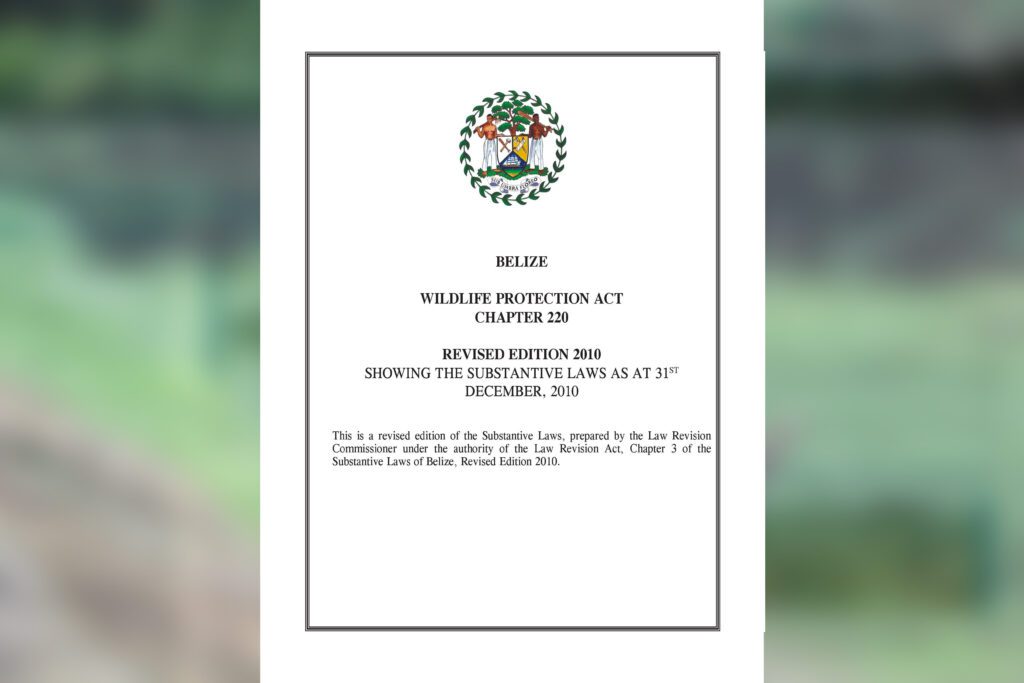

SHOWING THE SUBSTANTIVE LAWS AS AT 31st DECEMBER, 2010This is a revised edition of the Substantive Laws, prepared by the Law Revision Commissioner under the authority of the Law Revision Act, Chapter 3 of the Substantive Laws of Belize, Revised Edition 2010.
FOREST ACTCHAPTER 213 REVISED EDITION 2003
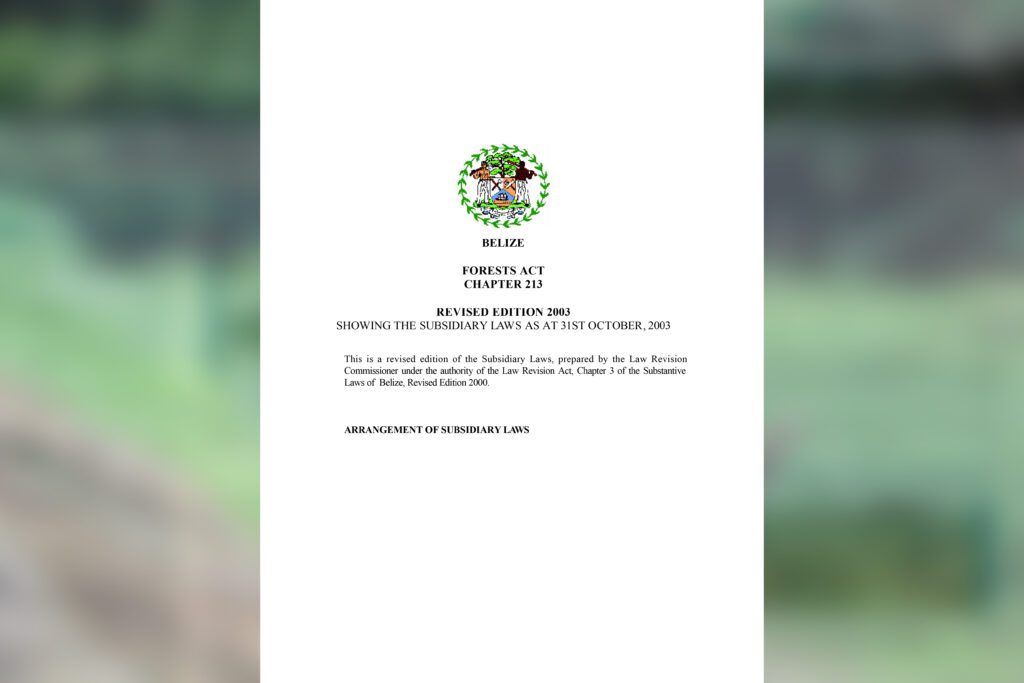

REVISED EDITION 2003SHOWING THE SUBSIDIARY LAWS AS AT 31st OCTOBER, 2003 This is a revised edition of the Subsidiary Laws, prepared by the Law RevisionCommissioner under the authority of the Law Revision Act, Chapter 3 of the SubstantiveLaws of Belize, Revised Edition 2000.
